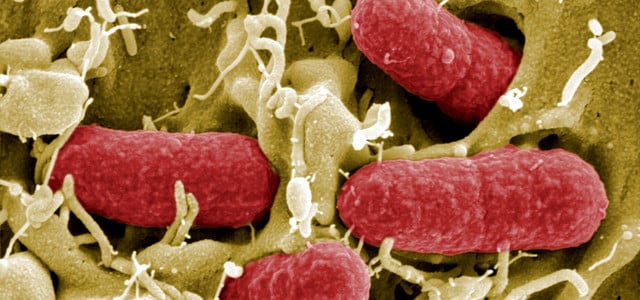
In view of the increased occurrence of EHEC infections, many ask themselves: How can I protect myself? Here you can find out who is particularly at risk and how the risk can be reduced in everyday life.
So far, significantly more EHEC infections have been registered in Baden-Württemberg than in the same period of last year. According to statistics from the state authority, 255 EHEC diseases were reported to the State Health Office (up to 34th calendar week). In the same period of the previous year there were 182.
Over the entire year, the State Health Office claimed a total of 360 cases of reporting infectious disease.
Most recently, an accumulation of EHEC infections in Mecklenburg-Western Pomerania had caused a stir. The number of those affected has increased to a total of 22 since mid-August, mostly children, two come from the southwest, according to the Baden-Württemberg Ministry of Health.
EHEC – what is that anyway and how is it best to protect yourself?
What is EHEC and why are the bacteria dangerous?
EHEC stands for – Attention tongue crusher – Enterohemorrhagische Escherichia coli. These are certain tribes of the intestinal bacterium E. coli that can make you sick. They occur primarily with ruminants and cattle. Less than 100 EHEC germs are enough to infect a person.
The bacteria form so -called shigatoxins – strong cell toxins. You can trigger serious diarrhea and the so-called hemolytic-uremic syndrome (HUS). This is a complication that can lead to kidney failure.
EHEC broadcast: This is how you are in
The bacterium can be found primarily in the feces of ruminants such as goats, cattle, sheep or deer. Direct contact with the animals is a transmission path. But the consumption of fruit and vegetables can also lead to infections because cultivation areas are fertilized with manure. It is also possible to transfer from person to person. The bacteria are excreted with the chair and are liable to hands with poor hygiene, for example. Since EHEC are relatively insensitive, they can survive for weeks in the environment.
Who is particularly at risk in a EHEC infection?
Small children, older people, pregnant women and people with a weakened immune system are particularly at risk. Infection can be difficult for them and lead to complications such as hemolytic-uremic syndrome (HUS).
Hand hygiene: The most important rule to protect against EHEC
The most important rule: wash your hands thoroughly with water and soap – before cooking, after contact with raw meat or after caressing animals. The BZGA in Cologne explains on a leaflet for 20 to 30 seconds – and not only the palms, but also the back of the hand, but also the back of the hand.
Prevent EHEC: what you should pay attention to when cooking
When cooking the meat, always cook well – especially minced meat (core temperature at least 70 degrees Celsius) and poultry. Raw milk is only recommended if it is pasteurized. And raw vegetables and salad must be washed thoroughly, which also applies to herbs and sprouts. It is also recommended to clean cutting boards and knives thoroughly when they were in contact with raw meat.
EHEC infection by animals: Why hand washing is so important
Many animals like to be caressed. Those who wash their hands afterwards protect themselves from contagion – especially in the petting zoo or for contact with cattle, sheep or goats. Children should definitely learn that because they are particularly sensitive.
EHEC symptoms: The first signs occur so quickly
The Federal Institute for Risk Assessment (BFR) is usually three to four days between the consumption contaminated food and the first symptoms.
This is how you recognize a EHEC infection
A EHEC infection leads to aqueous, sometimes bloody diarrhea. Those affected are often sick, they have abdominal pain and hand over. With 10 to 20 percent of the sick, bloody intestinal inflammation with a spasmodic building pain, bloody stool and partly fever develops as a severe form. An infection can also run without complaints and remain undetected.
What is the worst episode of an EHEC infection?
The most difficult course of an EHEC infection is hemolytic-uremic syndrome (HUS). The EHEC poisons can lead to anemia, vascular and severe kidney damage and even death.
EHEC: When you should definitely go to the doctor
Those who have diarrhea lose a lot of salt and liquid. In order to compensate for the loss, sick people should drink a lot. Antibiotics usually do not help with this EHEC infection, they can even make the disease worse. If you have severe complaints, you should go to the doctor immediately:
- With persistent, bloody or very strong diarrhea
- If fever, cramps or severe abdominal pain also occur
- When children, older or immunocompromised people are affected
When diarrhea becomes dangerous
Diarrhea becomes critical when there is a strong loss of fluid and salt. Typical warning signs for drying out are: dizziness, circulatory problems, very dry mucous membranes or eyes sunk in children. At the latest then medical help is necessary.
The 5 golden rules for protection against EHEC
- Wash your hands thoroughly – after the toilet, before cooking, by animal contact.
- Always get through well – especially minced meat and poultry (core temperature at least 70 ° C).
- Draw milk just drink pasteurized – avoid raw milk products better.
- Wash fruit, vegetables and salad thoroughly – also herbs and sprouts.
- Note kitchen hygiene – clean separate cutting boards for meat and vegetables, knives & boards.
Read more on utopia.de:
- Danger from sponges: Authority warns of health risk
- Multi-resistant germs: What you should know about antibiotic resistance
- Health: These 7 everyday objects are dirty than your toilet
** marked with ** or orange underlined Links to sources of supply are partially partner links: If you buy here, you will actively support Techzle\.com, because we will then receive a small part of the sales proceeds. More information.